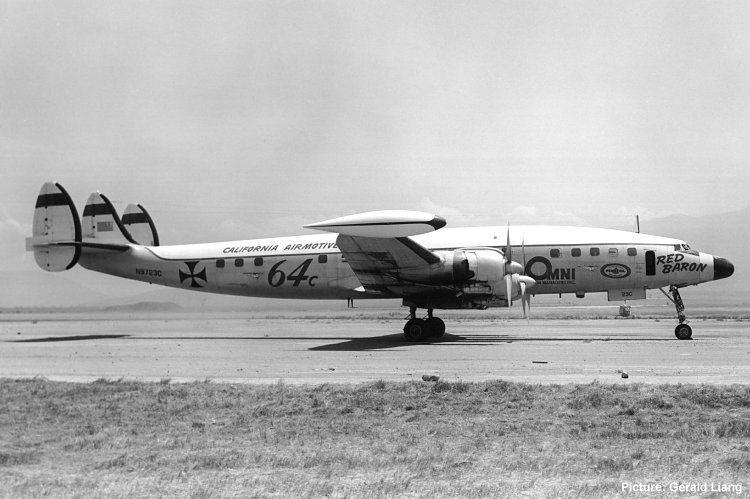The Connie Racer -
What Might Have Been
 |
|
The
Connie Racer had its genesis at the California 1000 Mile Air Race
at Mojave on 15th November 1970. Never before had an unlimited race
been held over such a long distance on a closed course. The race course
was laid out in the Mojave Desert around ten pylons with a lap distance
of approximately 15 miles. With a planned race duration of 66 laps,
the crews of the unlimited warbird racers were faced with a major
rethink! Most crews accepted that pit stops would be necessary, while
others experimented with "wet" wings and drop tanks. The most novel
entry came from Clay Lacy, the President of the Professional Race
Pilots Association, who entered a DC-7B freighter! Lacy was no stranger
to unlimited air racing but his usual mount was a purple Mustang.
(More recently, Clay Lacy has become well known as the supplier of
camera equipped Learjets which roam the world filming the latest aircraft
for the publicity departments of the world's airlines.) Lacy's "only
in America" solution was not entirely flippant, for it was reasoned
that the DC-7 would possess ample endurance to complete the race non-stop
while also generating publicity for the event and for the sport in
general. For such a large aircraft to compete, it was necessary to
waive the usual 21,000 pound gross weight limitation on unlimited
racers. The aircraft chosen was an ex American Airlines DC-7BF N759Z
(msn 45233) which belonged to Allen Paulson of California Airmotive.
For the race, the DC-7 was painted with Lacy's usual race number 64
plus the name Super Snoopy on the nose. A large rendition of
the famous beagle in a Superman suit adorned the rudder while sponsors'
logos complemented the race markings. The aircraft was co-captained
by Clay Lacy and Allen Paulson and the flight engineer was Joe Matos.
One writer observed during the race that the DC-7 flew lower than
some of the single-engined aircraft and that it flew faster and made
better pylon turns than a competing Douglas A-26 Invader. The DC-7
finished in a commendable sixth place in a field of twenty and still
had 1,500 gallons of fuel remaining. (For the record, the race was
won by a Sea Fury in 2 hours 52 minutes and 38 seconds at an average
speed of 344.08 mph). Clay Lacy was quoted at the time: References
|


